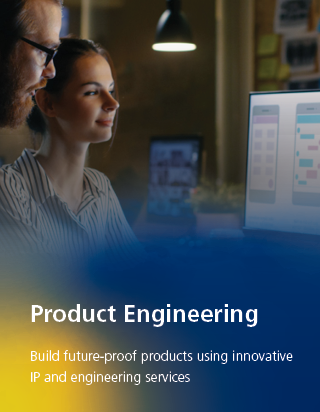Optimize Performance and Precision: Engineering Support for Setting Out, Measured Structure Surveying, and Topographical Surveys
Optimize Performance and Precision: Engineering Support for Setting Out, Measured Structure Surveying, and Topographical Surveys
Blog Article
Optimizing Resource Allocation With Strategic Surveying Practices
In the world of strategic resource allocation, the practice of surveying stands as a pivotal device for companies intending to maximize their efficiency and impact. By methodically collecting understandings and information, strategic surveying practices use a roadmap for informed decision-making and resource distribution.
Importance of Strategic Checking Practices
Strategic surveying practices play an essential role in determining the effective allotment of sources within companies. By performing strategic surveys, business can collect important data and understandings that help in making informed choices regarding the appropriation of resources such as manpower, time, and spending plan. These methods offer an organized method to recognizing the existing state of the company, recognizing locations for renovation, and lining up sources with tactical objectives.
One vital importance of tactical surveying methods is that they aid companies prioritize their efforts based on real-time responses from stakeholders. This makes sure that sources are routed in the direction of projects or tasks that have the highest effect on accomplishing organizational objectives. In addition, tactical studies allow companies to adjust to altering market conditions, customer preferences, and internal capacities by continuously examining and keeping an eye on source allocation approaches.
Gathering Insights From Stakeholders
Including comments from stakeholders is essential for organizations carrying out strategic surveying practices to successfully allot resources and drive decision-making processes. Stakeholders, including employees, consumers, vendors, and neighborhood members, hold important insights that can substantially influence the success of strategic efforts. setting out engineer services. Involving with stakeholders with studies, interviews, emphasis teams, and feedback sessions permits companies to gain a much deeper understanding of their preferences, demands, and problems
By collecting understandings from stakeholders, organizations can identify essential locations for improvement, prioritize source allocation based upon actual needs, and align calculated objectives with stakeholder assumptions. Entailing stakeholders in the decision-making procedure fosters a feeling of ownership and commitment, leading to increased buy-in and assistance for strategic efforts.
Moreover, stakeholders frequently provide distinct point of views and cutting-edge ideas that may not have been thought about inside. By actively listening to and including stakeholder feedback, companies can enhance their calculated surveying practices, make even more educated choices, and ultimately attain far better outcomes.
Utilizing Data-Driven Approaches
Making use of data-driven techniques is extremely important for companies seeking to improve the efficiency of their source allocation strategies and decision-making processes. By leveraging information analytics and progressed modern technologies, companies can remove useful insights to maximize resource allotment, recognize patterns, and make educated decisions. Data-driven approaches enable organizations to designate resources based upon empirical proof instead than intuition, bring about more reliable and effective outcomes.

Furthermore, organizations can employ anticipating analytics to forecast future resource demands and assign sources proactively. setting out engineer services. By leveraging historical information and fad analysis, companies can expect demand fluctuations and adjust their resource allowance strategies accordingly. Generally, welcoming data-driven strategies empowers companies go to make well-informed decisions that maximize resource allowance effectiveness and drive lasting growth
Identifying Locations for Enhancement
Identifying areas for improvement is an essential step in the procedure of maximizing source allocation. By recognizing where bottlenecks or inefficiencies exist within the company, decision-makers can route resources in the direction of addressing these certain areas.
One efficient approach for identifying locations for improvement is performing routine efficiency examinations throughout various divisions or functions. Through these evaluations, companies can gather important insights into areas that require attention or restructuring. Additionally, seeking feedback from staff members at all degrees of the company can give an unique viewpoint on possible locations for enhancement.
Moreover, making use of tools such as process mapping, SWOT analysis, find out here and benchmarking can aid in identifying locations for renovation by highlighting staminas, weaknesses, opportunities, and risks within the company. By methodically checking out these elements, companies can establish an extensive understanding of where resources need to be designated to drive efficiency and performance.
Practical Tips for Execution

Conclusion
Finally, critical surveying techniques play an essential duty in optimizing source appropriation by collecting understandings from stakeholders, making use of data-driven approaches, and identifying areas for enhancement. Applying sensible tips for effective surveying can result in more enlightened decision-making and enhanced internet resource allocation strategies. By focusing on calculated surveying practices, organizations can make certain that sources are alloted successfully and efficiently to satisfy their objectives and goals.
In the world of tactical resource allowance, the practice of surveying stands as a crucial tool for organizations intending to optimize their effectiveness and influence.Strategic surveying methods play a vital role in establishing the effective allowance of sources within companies.Integrating responses from stakeholders is important for companies executing strategic checking techniques to efficiently allot resources and drive decision-making procedures.Furthermore, companies can use predictive analytics to anticipate future source requirements and allot resources proactively. By prioritizing critical surveying methods, companies can ensure that resources are alloted efficiently and successfully to fulfill their purposes and objectives.
Report this page